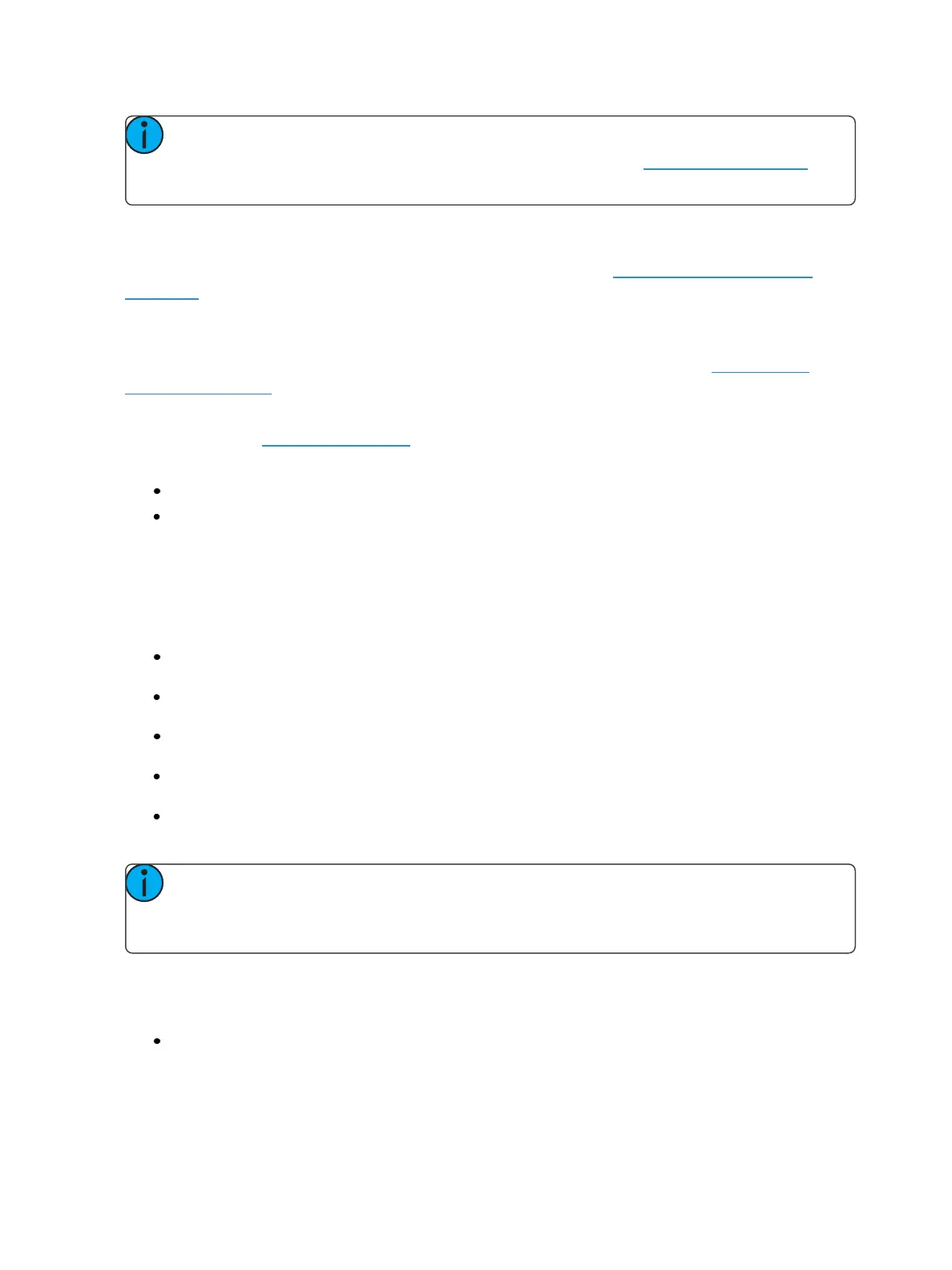Storing and Using Palettes 229
Note: If enabled in Setup, you can double click on a palette direct select button to quickly
recall from the selected palette and put its content on stage. See Displays (on page165) for
additional information.
Recalled palettes will appear as manual data for the specified channels. That data will appear as abbre-
viations of the palette type (IP3 = Intensity Palette 3, FP8 = Focus Palette 8, and so on), or as the
palette label if defined/enabled in the displays settings in Setup (see Show Reference Labels (on
page165)). To see the numeric values behind any palette (or other referenced value), press and hold
the [Data] key. To see the palette number behind the label, press [About] + [Label].
When palettes are recalled, channels with stored data in the palette will follow that data according to
manual time settings. A manual time master fader can also affect the timing. See Manual Time
Master (on page93) for more information.
Palettes may also be recalled using a time specified using [Sneak] [Time]. For examples on using
[Sneak] [Time], see Sneak (on page197)
You may also use groups to recall palettes. For example:
[Group] [1] [1] [Beam Palette] [5] [Enter]
[Group] [5] {Color Palette 6}
Palettes may also be recalled from the direct selects which automatically terminates the command
line. To recall only specific parameters of a palette, select channels and the required parameters (or
those not required, using the [-] key) in the command line.
The following are methods that can be used to recall palettes.
[selected channels] {direct select} - recalls the associated (IFCB) palette data for the selected
channels.
[selected channels] [Palette] [n][Enter] - recalls the associated IFCB palette for selected chan-
nels.
[Channel List] {edge} [Beam Palette] [n] [Enter] - recalls only the edge data from the specified
beam palette for the selected channels.
[Group] [n] [Palette] [z] [Enter] - recalls all of the data in the palette and applies it to the selec-
ted group.
[Intensity Palette] [y] [At] [/] [z] [Enter] - recalls the intensity palette for selected channels and
sets all recalled intensity values to a proportioned level of their recorded states.
Note: The above example breaks the referenced link to the intensity palette. To maintain
the link, the palette must be recalled without a modified intensity value. Calling back the
intensity palette at full will also break this link.
When recalling palettes, only channels that are selected at the point of recall will be affected by the
palette recall. The data recalled from a palette is referenced. To break the reference you may use
{Make Absolute}.
[Channel List]{Edge} {Beam Palette} [n] {Make Abs} [Enter] - recalls only the edge data from the
specified beam palette for the selected channels and makes that absolute data.

